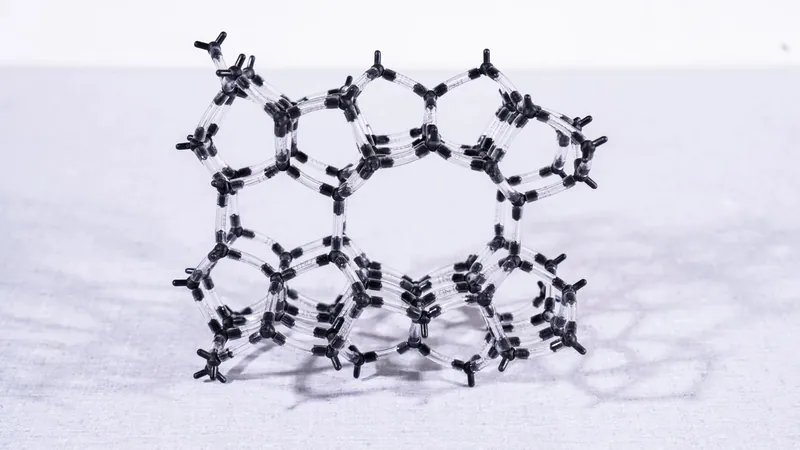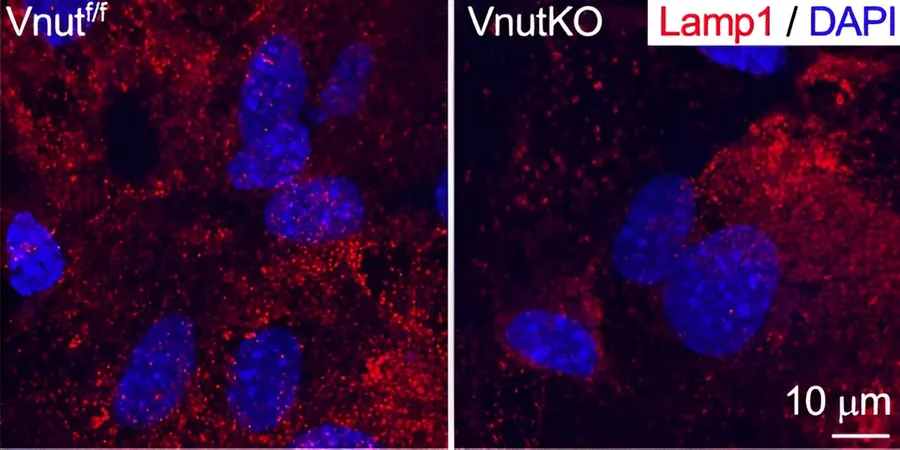
Revolutionary Findings on Catalysts Pave the Way for Cleaner Industrial Emissions!
2024-10-10
Author: Li
Revolutionary Findings on Catalysts Pave the Way for Cleaner Industrial Emissions!
In a groundbreaking study, researchers at the Paul Scherrer Institute (PSI) have unveiled vital mechanisms behind how zeolite-based catalysts effectively eliminate toxic nitrogen oxides from industrial emissions. With environmental concerns at an all-time high, this research couldn’t have come at a better moment, as industries grapple with the need to minimize their ecological footprints.
Nitrogen oxides, including nitric oxide (NO) and nitrous oxide (N2O), are notorious for their harmful effects on both human health and the environment. Nitrous oxide, commonly known as "laughing gas," has been a significant byproduct in the fertilizer manufacturing process. Thus, finding efficient methods to combat these emissions is essential, and zeolite-based catalysts have emerged as a promising solution.
In collaboration with CASALE SA, a Swiss chemical company, PSI researchers have extensively investigated how these catalysts operate. Their findings, now published in *Nature Catalysis*, could potentially lead to advancements in better-performing catalysts, making a profound impact on industrial pollution reduction.
Understanding the Complex Framework of Zeolites
Zeolites, naturally occurring or synthetically manufactured, are composed of a robust framework of aluminum, oxygen, and silicon atoms. These compounds are commonly utilized as catalysts in various chemical processes, and their unique features allow for the addition of various active elements. In this study, the focus is on iron – a pivotal component that drives the conversion of the harmful nitrogen oxides into harmless molecules.
According to Filippo Buttignol, a doctoral researcher involved in the study, the investigation revealed a "zoo" of different iron species within the zeolite structure. Individual iron atoms can exist in isolated spaces or in clusters when bonded with oxygen atoms. The essential question for researchers was which of these iron forms was critical for catalyzing the reaction that neutralizes nitrogen oxides.
Revolutionary Techniques for Analyzing Catalysis
Employing advanced spectroscopic techniques, the team, led by Davide Ferri, designed a series of experiments to identify the specific roles of various iron species in the catalytic process. They utilized the Swiss Light Source (SLS) at PSI for X-ray absorption spectroscopy to observe all iron species simultaneously during the chemical reaction.
Collaboration with ETH Zurich enabled the use of electron paramagnetic resonance spectroscopy to pinpoint contributions from each iron species. Finally, infrared spectroscopy offered insights into the molecular characteristics of the different species involved.
The culmination of these methods revealed that catalysis occurs at distinct iron atoms positioned in adjacent sites within the zeolite structure. Notably, two specific iron atoms work in unison: one facilitated the conversion of nitrous oxide, while the other catalyzed nitric oxide reactions.
"This precise arrangement is where we observe effective catalysis of both gases," Buttignol explained. The catalytic process sees each iron atom engaging in a redox reaction, cyclically donating and retrieving electrons.
Towards a Greener Future
The implications of this research are significant. Understanding the exact mechanisms of these catalysts opens new avenues for refining catalyst manufacturing, which can lead to more efficient removal of hazardous nitrogen oxides and, ultimately, cleaner industrial emissions.
As the pressure mounts for industries worldwide to adopt sustainable practices, this study stands as a beacon of hope for achieving a healthier planet while ensuring industrial progress. The quest for zero-emission technologies may soon be closer within reach, thanks to such pioneering research. Is this the breakthrough the environmental movement has been waiting for? Only time will tell!







 Brasil (PT)
Brasil (PT)
 Canada (EN)
Canada (EN)
 Chile (ES)
Chile (ES)
 España (ES)
España (ES)
 France (FR)
France (FR)
 Hong Kong (EN)
Hong Kong (EN)
 Italia (IT)
Italia (IT)
 日本 (JA)
日本 (JA)
 Magyarország (HU)
Magyarország (HU)
 Norge (NO)
Norge (NO)
 Polska (PL)
Polska (PL)
 Schweiz (DE)
Schweiz (DE)
 Singapore (EN)
Singapore (EN)
 Sverige (SV)
Sverige (SV)
 Suomi (FI)
Suomi (FI)
 Türkiye (TR)
Türkiye (TR)